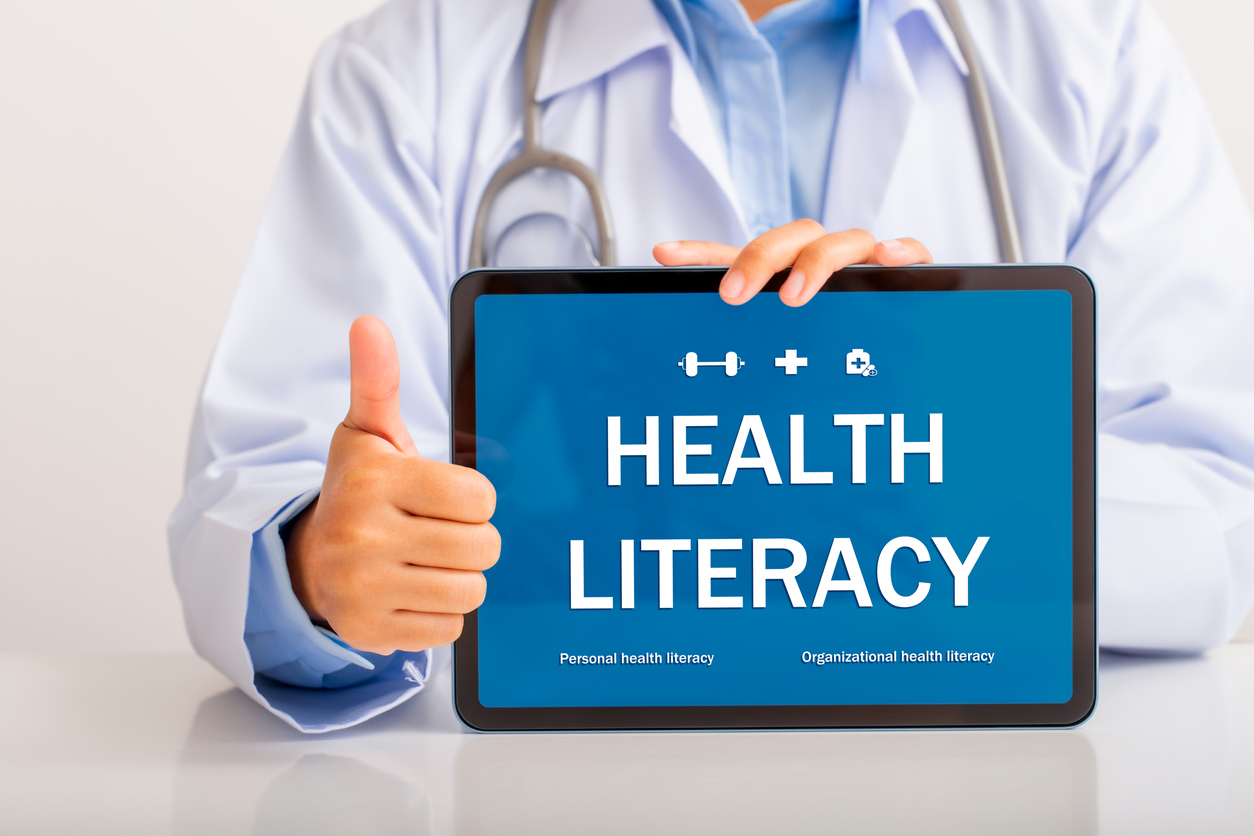Health Literacy Month
October is Health Literacy Month! As stated by the Institute for Healthcare Advancement (IHA), this month is the perfect time for organizations and individuals to promote the importance of understandable health information. If we all work together, we can create a shift from health literacy awareness to health literacy action by building a world where all individuals have access to quality health outcomes.
Did you know that health literacy doesn’t only refer to someone’s ability to read. It is the ability to read and comprehend health and healthcare related terminology, numbers, documents, test results, and other informational readings. Health literacy also refers to the ability to act and make decisions based on relevant health information, such as nutrition labels. According to the National Institutes of Health and The Benefits Guide, low health literacy can result in:
- Improper or less frequent use of preventive services
- Inability to correctly fill out paperwork
- Increased chance of taking medications incorrectly
- Poor control of chronic conditions
- Above average emergency room visits and hospitalizations
- Inability to fully understand and take advantage of health benefits
Having low health literacy not only impacts the individual, but it also impacts the employers and the economy as a whole. Low health literacy contributes to more sick days, reduced productivity and increased medical costs. As stated by Mercer, low health literacy costs the U.S. economy an estimated $238 billion annually.
Making Employees’ Health Literacy a Priority
As an employer, working to improve health communication can reduce health care costs and increase quality of healthcare for employees. Listed below are ways employers can help employees improve their health literacy, for both in office and remote employees!
- Provide Quality and Detailed Explanations of Benefits: Provide resources that fully explain in detail what copays, deductibles and out-of-pocket limits are so employees can better understand how they could get billed for unexpected costs. Remember that all employees learn differently, so offer explanations in a variety of ways, like printed documents, infographics, videos, PowerPoints, etc.
- Break Down the Medical Jargon: Medical information can be complicated and packed with confusing jargon, so make an effort to share easy to understand information from reputable sources. The Benefits Guide recommends using resources from Medline.
- Offer Multiple Translations: If you have employees who speak different languages, be sure to offer translations of medical information so you can make sure they are fully understanding everything. Many websites already offer information in both Spanish and English, and many other languages can be found or translated to as well.
- Include Picture-Based Information: This will help employees who may have lower literacy skills or just a preference for visual learning. The Benefits Guide cites the World Health Organization and Medium for having great infographics and image-heavy health tips to choose from.
- Schedule Seminars, Webinars or “Lunch and Learns”: These kind events can easily be done virtually, which can help you reach more of your employees. Have an HR representative talk about the benefits your organization offers and explain common health terminology. You may even be able to have local doctors or public health employees speak about specific health topics. Health Designs has a variety of workshops and webinars available to employers nationwide, contact us for more information!
- Provide Quality Tools: For those that like to do their own research, make sure you provide quality tools for them to use, such as an online healthcare glossary, digital pamphlets, brochures, and other easily accessible educational materials.
Visit HealthLiteracyMonth.org to learn more about Health Literacy month and access their toolkit!



